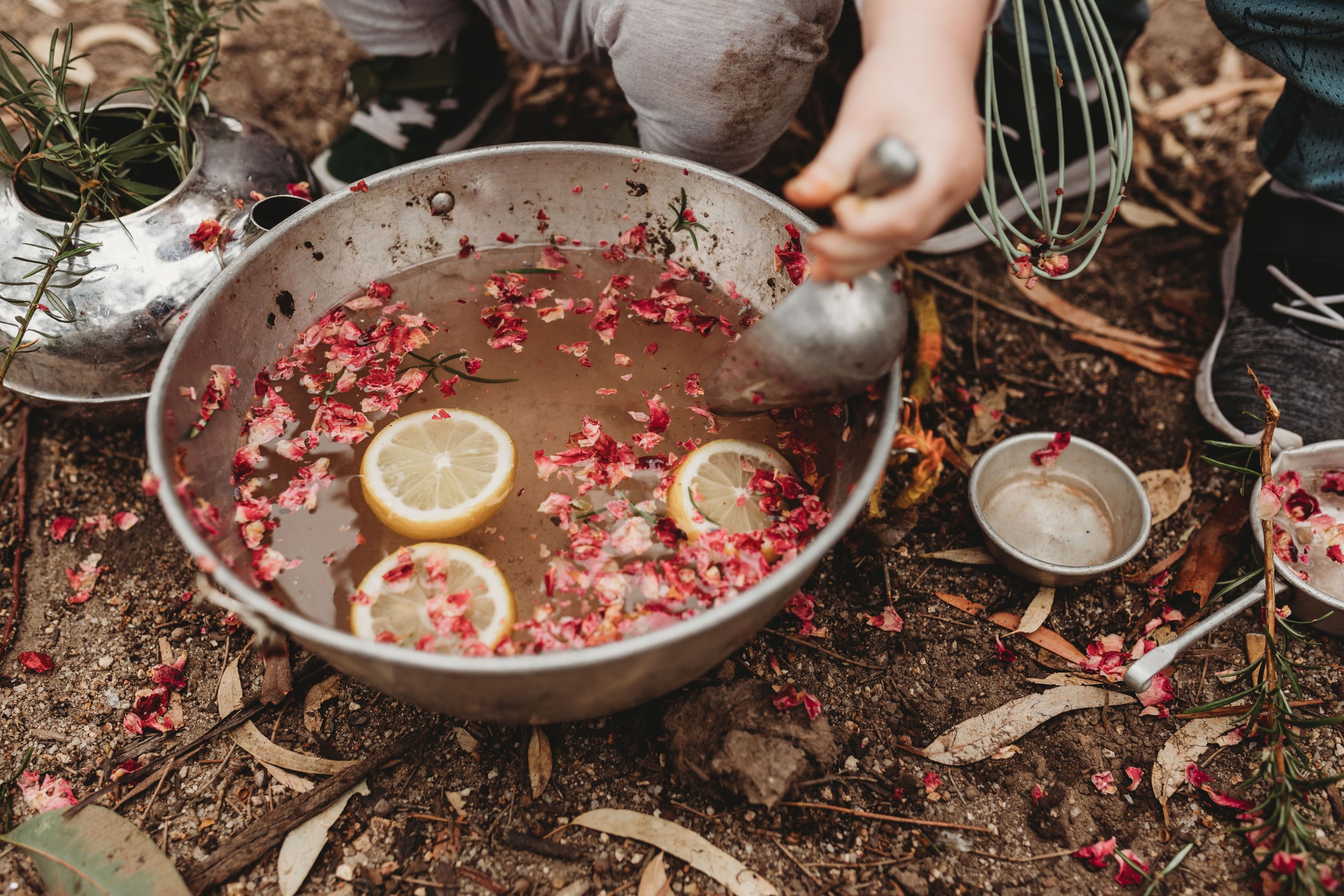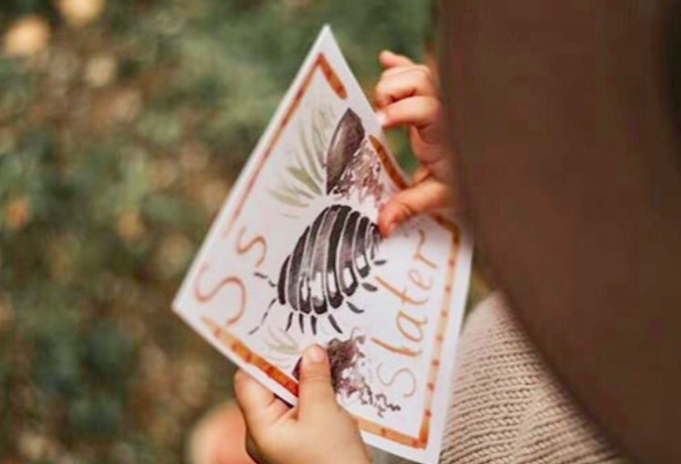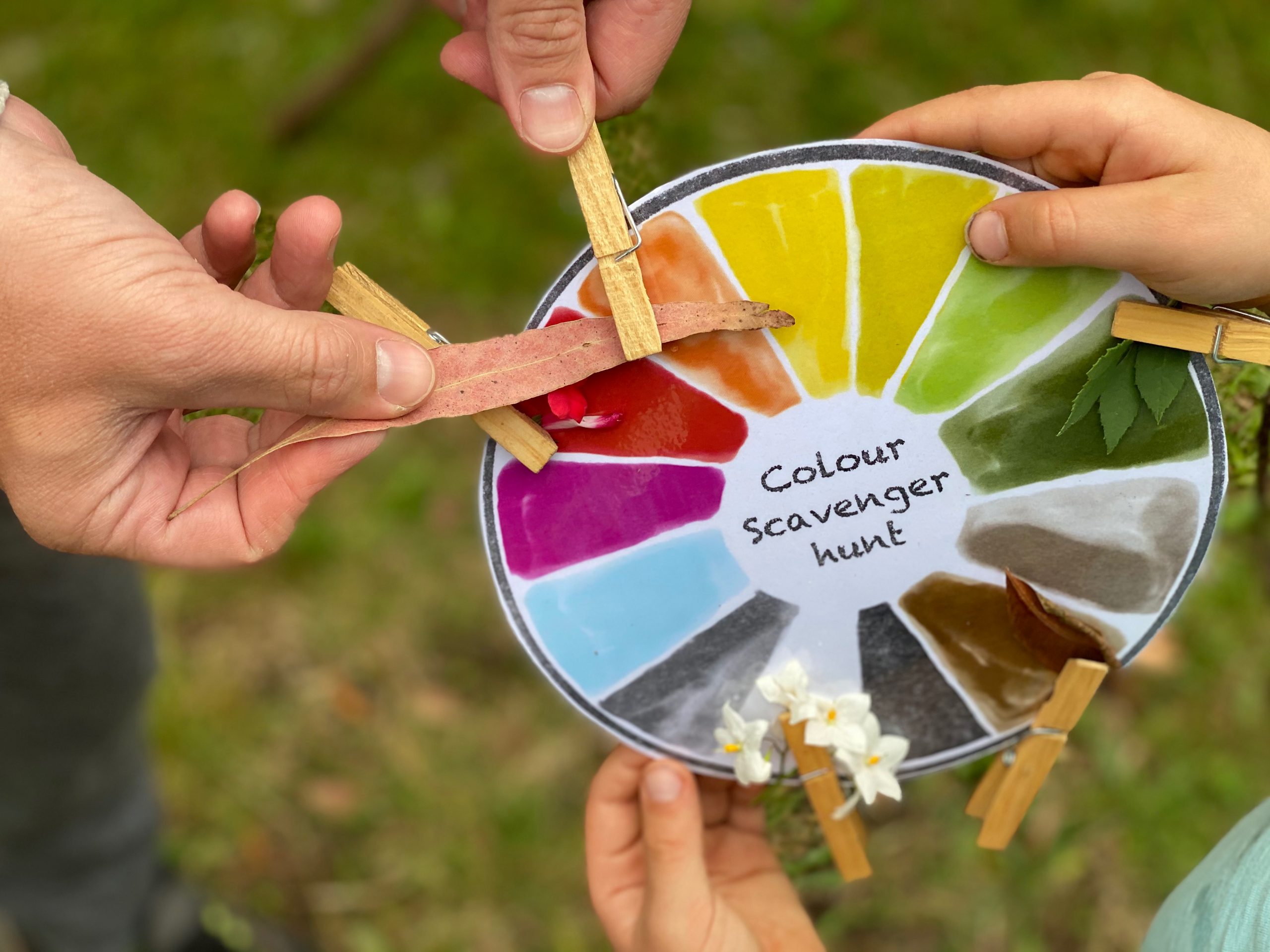There are so many great opportunities for children to engage in quality outdoor play and they don’t have to go any further than their backyard!
Nature is all around us, whether we live in the city, suburbs or country and you can create a nature playspace and enjoy nature play all year round . To experience all the great benefits of nature play in your own backyard, we have shared some nature play ideas and activities to get you playing outside, connecting to nature and most importantly having fun!
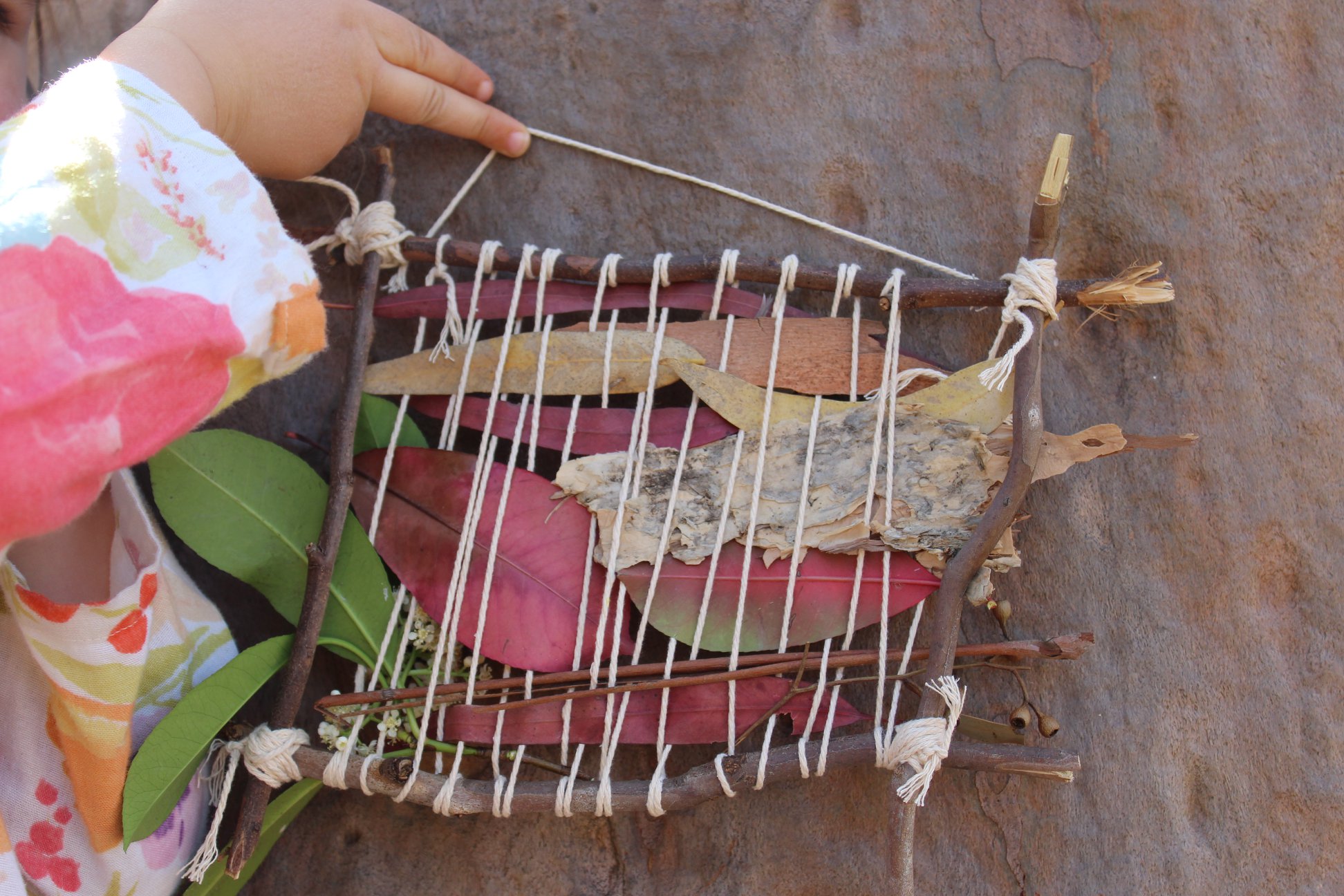
1. Create a weaving frame: using sticks, build a sturdy square frame, tying string (twine) to the ends and then weaving it across the frame, back and forth, until you get to the end. Now you can collect some natural items from your backyard to weave into your frame! You can also build a gigantic one in your backyard.
2. Nest building: what do birds use to build their nests? How do they make them? Hunt around your backyard to find a mixture of twigs, grass, leaves and bark. Fashion these into a nest shape as best you can. Birds are very clever doing this without hands! Make some eggs by rolling mud into ball shapes, to put inside.
3. Make your own mud kitchen: use some loose parts as well as water and dirt to create your own outdoor kitchen. All you need to begin is a pot or bowl and a stick, and you can start mixing and making mud cakes, pies, soup or tea! Build your collection of utensils as well as ‘ingredients’ like rocks, leaves, sand or even herbs from your backyard. This activity builds creativity and is a sensory delight for your child
4. Take a sensory walk: remove your shoes and take real notice of the feel of what’s under your feet. The smooth, cool grass, some textured mulch or tanbark, maybe some gritty sand. How do they feel on your feet (and your hands, if you wish)? Put on a blindfold to enhance the sensory experience and play a guessing game of what you are standing on. You might enjoy a nature sensory scavenger hunt here.
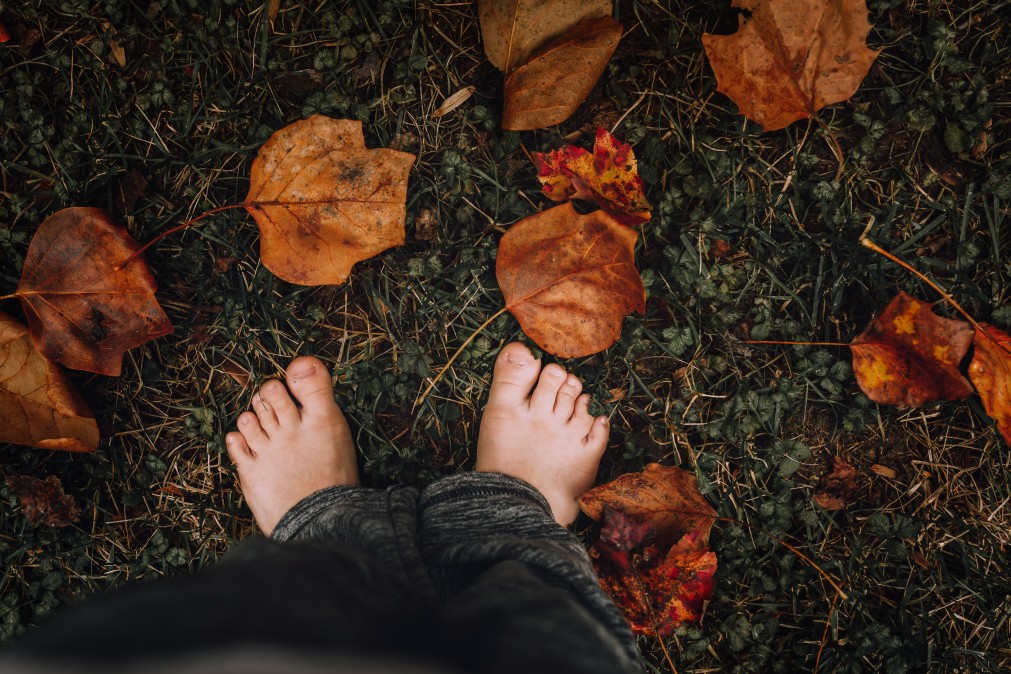
5. Nature printing or rubbing: using additional items from inside like paper, pencils or crayons and play dough, bring patterns and textures from nature onto these materials. Place your paper over the bark on a tree or some leaves and rub your pencil or crayon on it. The appearance will be replicated on your paper. Press or roll leaves, sticks or seedpods into the play dough. The patterns from these natural items will be reproduced on the dough.
6. Crushing: this activity strengthens fine motor skills. Find something heavy enough to crush with in your backyard, like a rock or thick stick. Use it to crush leaves, soft rocks or dry dirt to release fragrance or colour. On a hot day, it’s fun to crush up ice prepared earlier, especially if frozen with herbs, flowers or even berries for a burst of colour inside.
7. Sorting – assemble a group of various nature items. Talk about similarities and differences between them. Ask your child to sort them into categories such as same colour, shape, size or type. Incorporate some counting and you have a rich maths learning opportunity.
8. A Backyard Safari Adventure: discover what is in your backyard by going on a safari adventure! Using Eco Explorers’ ABC Backyard Safari Activity Cards, a set of 23 cards designed and illustrated by facilitator Kate Rijs, set out to find the items on the cards and learn more about it and your own outdoor space. You’ll be amazed at what you find!
9. Build your own river: dig a riverbed shape in the ground with a stick or your hands. At one end, pour some water into it. Does the water flow to the other end? If not, how can you help that to happen? Once you get flow, float some leaves or a stick on it, seeing if they will flow down it too. Collect the water at the other end and recycle it at the top, beginning the flow again.
10. Create a potion station: a pot can be your cauldron into which go the ingredients to make your own magic potion. You might add some different textured bark or leaves, some different coloured flowers that add a fragrance or some herbs or other things from the garden that add smell. Stir your brew until it bubbles and cast a spell! Don’t forget to save your empty jars to store your positions and make labels for them.
11. Build a rope swing: if you have a tree in your backyard then perhaps you can build your own rope swing to hang from it. All you need is some rope and a sturdy straight stick to sit on.
12. Go fishing: prepare a shallow dish of water (always supervise children around bodies of water regardless of depth). Make your own fishing rod with a length of string attached to a stick. Throw your line into the water and try to ‘catch’ a fish. Floating leaves in the water makes great fish, attaching them to the end of the line is a lovely reward for patience and perseverance.
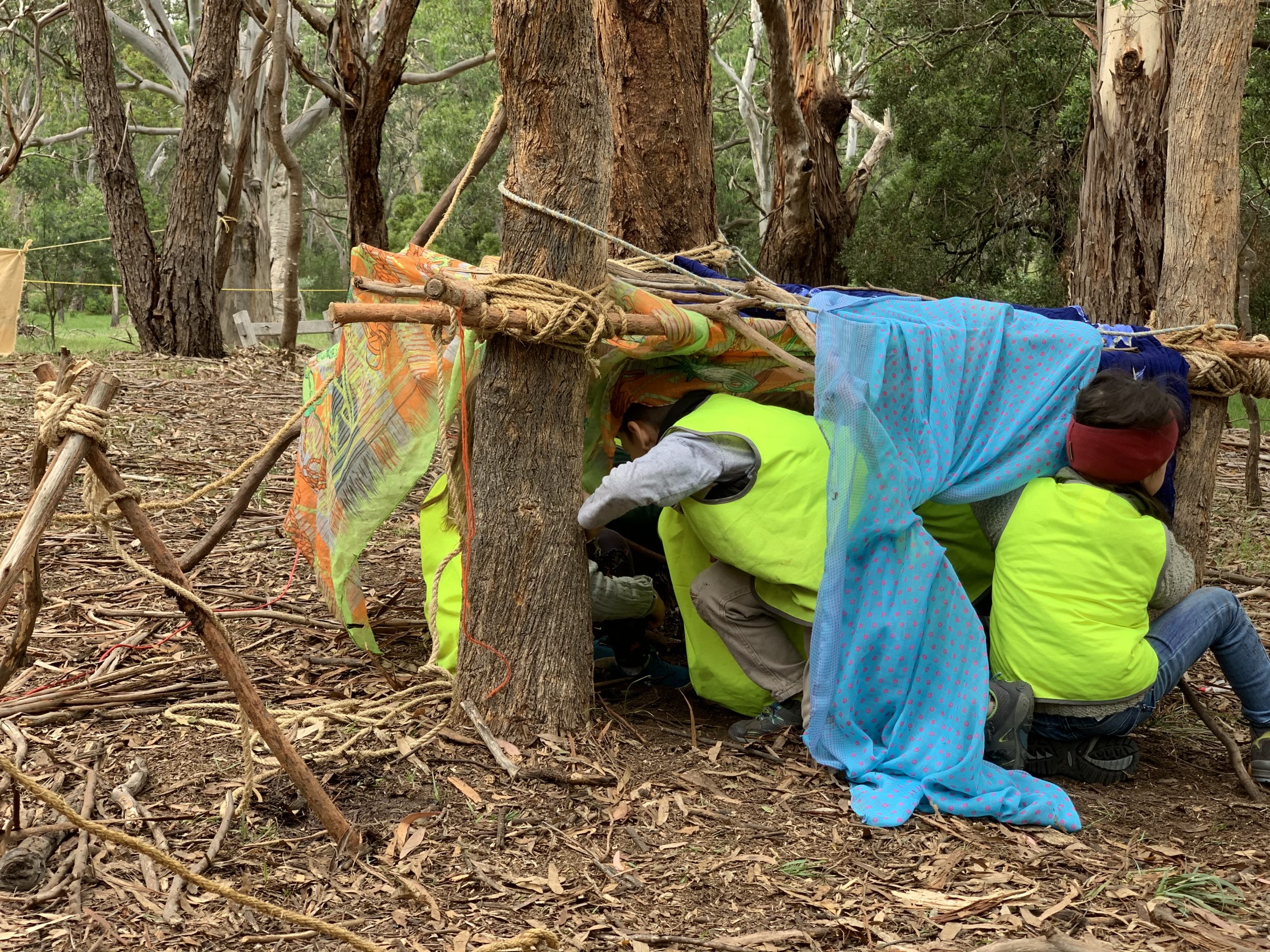
13. Cubby building and creating: if you don’t have big sticks in your backyard, what else could you use to make your own cubby? Grab an old sheet or large scarf from inside and find something to drape it over to make one. Crawl under a bushy plant and play inside your own hidey-hole. Use 3 garden stakes or poles to create a tripod shape, joining them together at the top with some rope and sit underneath. You will have your own cubby in no time with these simple ideas.
14. Sounds in your backyard: take some things from nature and see what sounds they make by tapping them together, on the ground, or on a tree, rock or other surface. Listen to the differences. Add water, in a jar with the nature item inside, or onto the tapping instrument, and see how that changes the sound. See if you can play the sounds to the tune of your favourite song and make music.
15. Nature colour matching: nature isn’t just green and brown! You’d be surprised at the vast array of colours found in nature. Try searching for each of the colours on the Eco Explorers Colour Scavenger Hunt Wheel in your backyard. This activity encourages children to slow down and look for the finer details of things they might not normally notice, through colour.
16. Boat building: can you find materials in your backyard to build your own boat? Bark makes a great hull and deck, and sticks and leaves can be used for a mast and sail. You might need to use string as well. Check if your boat floats or sinks in a dish of water. What can you do to help it if it didn’t float?
17. Discovering other creatures in your backyard: who else do you share your outdoor space with? If you look under rocks, bark and even dirt, you will likely find some bugs going about their business. Your backyard is a rich environment for bugs to live in, you can see them in action there while learning about them. Grab a magnifying glass and Eco Explorers Backyard Bug Hunt Cards, a set of 20 designed and illustrated by facilitator Kate Rijs, to give you clues as to where they will most likely be.
18. Nature mobiles: find a long stick and 4 other different nature items. Order the 4 from lightest to heaviest. Tie each to your stick and use the string to make a hanger above it. Hang it somewhere in your backyard as a nature mobile or use it as a wind gauge: if your heaviest item moves when the wind is blowing, the wind is very strong.
19. Create a mini world: can you make a mini-land and some small creatures to live in it? Build a forest with some sticks you find, put some leaves on top to create trees. Make some small houses with more sticks if you have enough, building the foundational shape and layering them on top of each other to create walls, with some bark on top as a roof. Create people from sticks or leaves tied together with string, they can be walking in the forest, or inside their house. Let your imagination go wild with what other things you would like in your mini world.
20. Make your own paint: try and find some dirt that is a different colour to other dirt in your backyard. Mix it together with water to make paint. Use a paintbrush to apply it to paper, a tree or on bark and leaves. This paint can also be applied using fingers and hands for a lovely sensory experience. You may also be able to make paint from crushing charcoal or soft rocks, making more different colours.
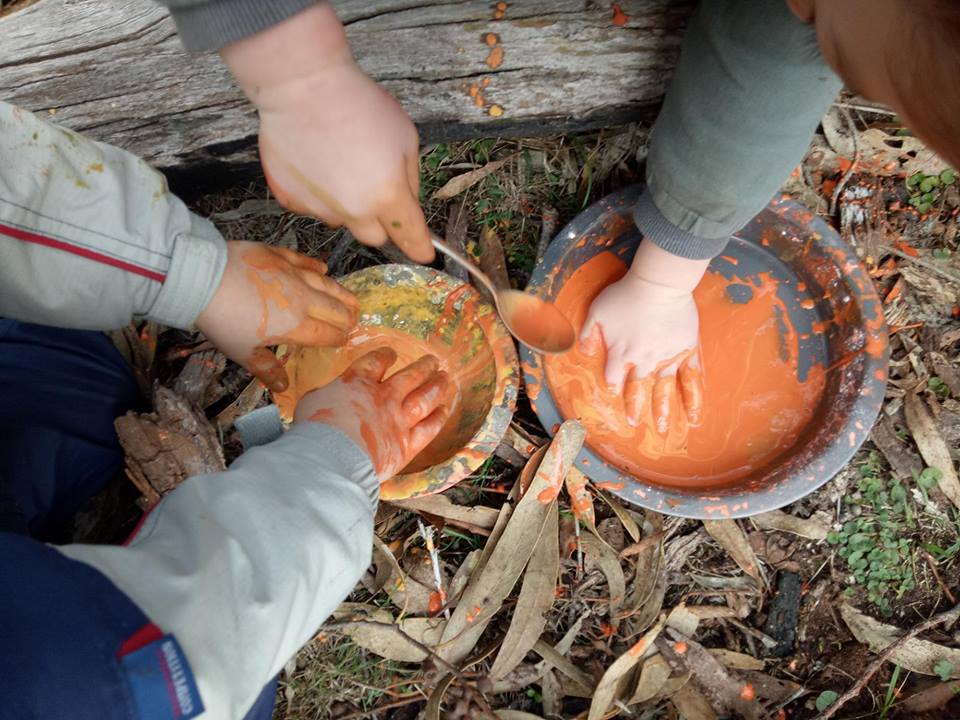
There are so many ways to engage and encourage children to spend time outdoors and it’s start with you and the environment that you provide. As you can see, you don’t need any toys or expensive items but by providing them with loose parts from your kitchen, some simple art materials (paper, brushes etc) and a space to build and hide, you are creating an environment that promotes creativity, earning and imaginative play.
For more nature play ideas and activities, head to our downloadable resources page here.

